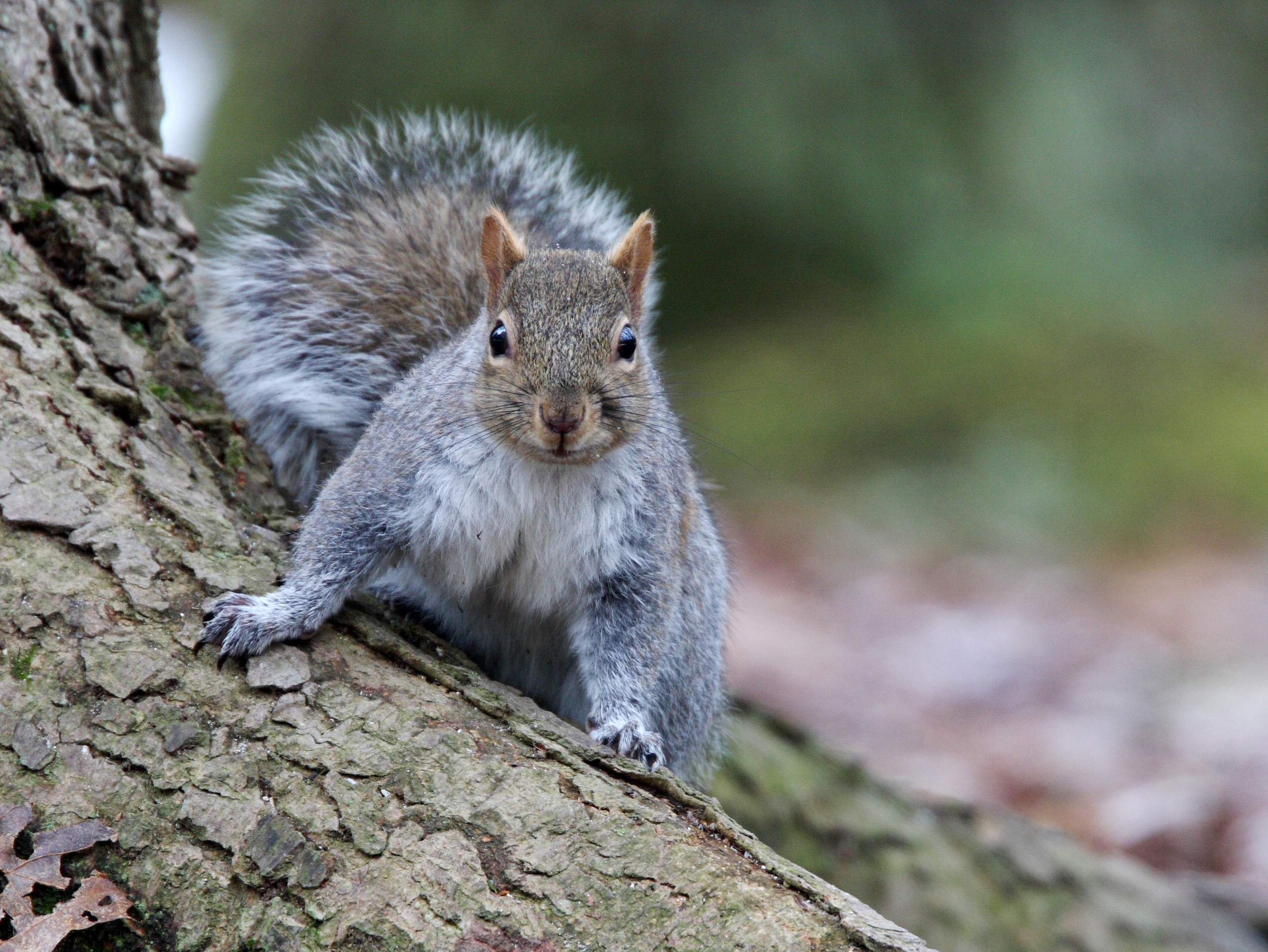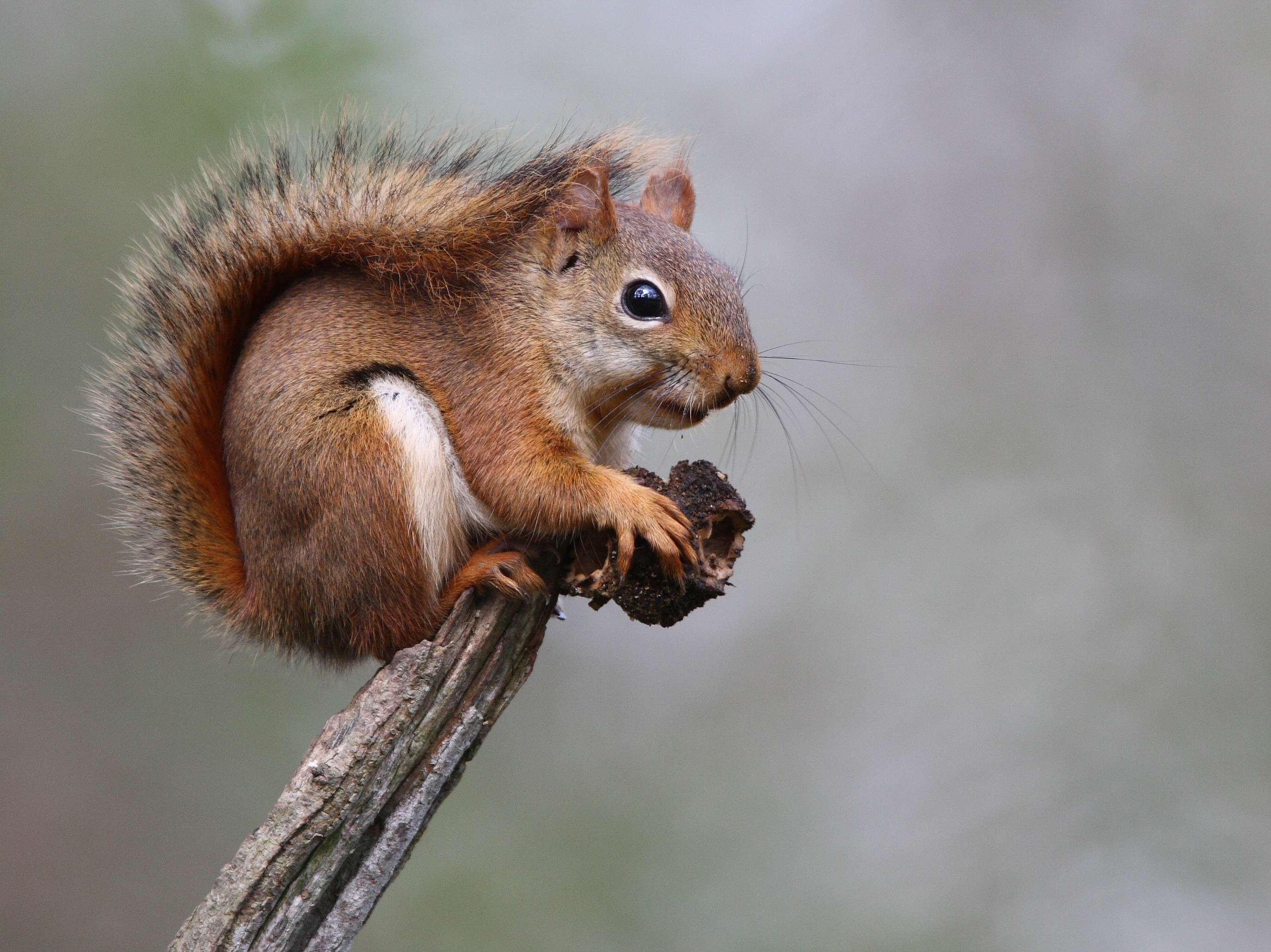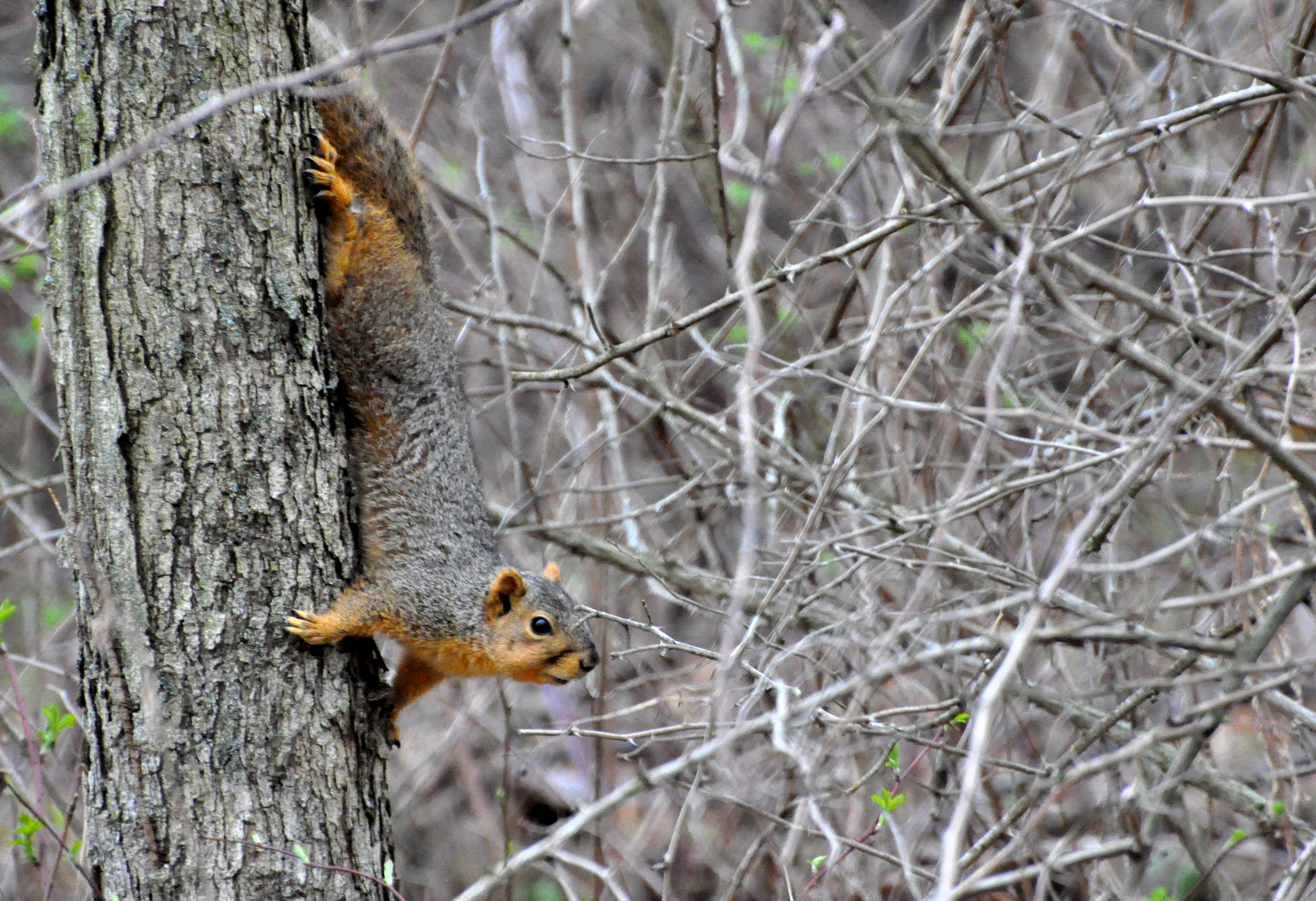Tree squirrel
There are many species of tree squirrels in North America. All of these tree squirrels are active throughout the year and build leaf nests or use tree cavities for denning. They also will use chimneys, attics, and soffits to den. Squirrels cause problems by digging in yards and gardens, raiding bird feeders, and gnawing holes near gutters and eaves to invade homes. They can get into attics, walls, and ceilings, gnawing on wires and getting trapped in chimneys and flues. They may exit into basements and living areas, chewing indoor sills trying to escape. These common species are found in forests, parks, and yards of rural and urban areas:
Fox squirrels are the largest tree squirrels and are typically brown-gray above with an orangeish-brown underside. Fox squirrels are most abundant in hardwood forests and woodlots with limited undergrowth. Fox squirrels reproduce twice a year, in the spring and late summer, with an average litter size of three.
Gray squirrels typically are gray above with a white underside. Gray squirrels tend to inhabit more extensive hardwood forest areas with more undergrowth. Gray squirrels reproduce twice a year, in the spring and late summer, with an average litter size of three.
Red squirrels are significantly smaller than fox and gray squirrels and have reddish-brown fur above with a white underside. Red squirrels are more northern in their distribution and partial to evergreen forests or deciduous forests with an evergreen component. Red squirrels reproduce twice a year, in the spring and late summer, with litters ranging from two to seven.
Flying squirrels are the smallest squirrel, slightly larger than a chipmunk, with a sandy brown upper body, white underside, and specially adapted fold of skin and flat tail allowing them to glide through the air. Northern flying squirrels live primarily in Canada but are found in northern New England, the northern midwest and down the west coast into northern California. The slightly smaller southern flying squirrel ranges from southern Canada down into Mexico and from the east coast to just west of the Mississippi River. Flying squirrels also reproduce twice annually, in the spring and late summer, with litters ranging from two to seven.
Solutions for tree squirrel problems
Laws and regulations to be aware of
Regulations for Connecticut
|
|||
While we attempt to provide guidance about state and federal regulations pertaining to specific species and control techniques, we do not provide information about local jurisdictions (city, town, county, etc.) where regulations may be more restrictive, especially as it applies to discharge of firearms, transport of animals or use of trapping equipment. Contact your local city or county government to inquire further. No guarantee is made that information (or lack of information) associated with a species or control technique is completely accurate or current. You should become familiar with federal, state and local laws before beginning any wildlife control activities. |






